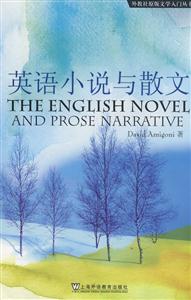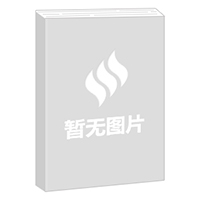掃一掃
關注中圖網
官方微博
本類五星書更多>
-
>
考研英語背單詞20個詞根詞綴
-
>
西班牙語詞根寶典
-
>
美國K-12原版語文課本--初中·下(全12冊)
-
>
流浪地球劉慈欣
-
>
西南聯大英文課 輕讀禮盒版
-
>
英語大書蟲世界經典名譯典藏書系:中國人的精神 (英漢對照)(精選權威版本)
-
>
許淵沖譯唐詩三百首:漢文·英語
英語小說與散文-英文版 版權信息
- ISBN:7544611868
- 條形碼:9787544611862 ; 978-7-5446-1186-2
- 裝幀:暫無
- 冊數:暫無
- 重量:暫無
- 所屬分類:>
英語小說與散文-英文版 本書特色
“外教社原版文學入門叢書”以介紹文學理論和小說類型及相應的社會文化背景為主,勾勒出英美文學發展的概貌。本叢書文字簡練、語言生動,對我國的外國文學及理論研究者、在校學生以及廣大文學愛好者都有很高的參考價值。本書為《英語小說與散文》分卷。
英語小說與散文-英文版 內容簡介
《英語小說與散文》通過分析、解讀不同時期的英美文學作品,比較全面、系統地介紹了不同流派的英美小說與散文的起源、發展和演變;本書同時也涉及相關的文學批評理論。全書言簡意賅,脈絡清晰,適合英美文學研究者、愛好者及英語專業學生閱讀。
英語小說與散文-英文版 目錄
acknowledgements
preface: the scope of the book and how to read it
1 introduction: straightforward discourse and novel transactions
1.1 literature and non/literature?
1.2 prose
1.3 narrative
1.4 narrative in context: the novel, mimesis and poetics
1.5 the novel and prose narrative in literary/critical argument: formalism and old and new historicisms
1.6 studying the novel and prose narrative: historicism, culture and rhetoric
1.7 the novel and prose narrative: from 'literature' to 'intettextuality'
1.8 the novel and prose narrative as 'forms of discourse'
1.9 the novel and 'culture' revisited: 'cukure' as learning,'self, culture', 'culture' as a field of conflict
2 the elements of narrative analysis and the origins of the novel: reading jane austen's emma and samuel richardson's pamela
2.1 the novel and formalist criticism
2.2 reading the form of narrative fiction: jane austen's emma
2.3 implied reader, real reader: narrator, implied author
2.4 events: story and discourse
2.5 character and point of view in emma
2.6 limitations of the formal approach: social spaces and voices in narrative, from free indirect speech to social contexts
2.7 what happens in richardson's pamela'.
2.8 first,person narration and the epistolary form:the dramatised narrator, rhetoric and the narratee
2.9 the narratee and writing as an 'event' in pamela
2.10 pamela, print culture and debates about genre: the familiar letter, criticism and 'the novel'
2.11 the debate about the origins of the novel
2.12 the rise of the novel: ian watt and the tradition of formal realism
2.13 contested fields of cultural discourse and the rise of the novel: lennard j. davis and michael mckeon
2.14 gender and the rise of the novel: the domestic woman and the production of subjectivities
2.15 re,reading emma: letters, standards and intertextual allusion
3 bildung and belonging: studying nineteenth.century narrative and 'self/culture'
3.1 the bildungsroman
3.2 biography and autobiography in the nineteenth century
3.3 the viewpoint of youth: bildung in nineteenth,century history
3.4 reading jane eyre: the critical reception; romance and 'self, culture'
3.5 romantic autobiography and character classification in jane eyre
3.6 space, time and subjectivity in jane eyre
3.7 where does jane eyre belong.
3.8 reading samuel bamford's early days: the common narrative strategies of autobiography and novel
3.9 'reality is always romantic, though the romantic is not always real': the truth of autobiography
3.10 reading elizabeth gaskell's the life of charlotte bronte: the rhetoric of biography
3.11 biography, gender and the public position of the woman writer: negotiating 'realism' and 'romance'
3.12 reading george eliot's the mill on the floss: culture as 'incarnate history'
3.13 'writing the history of unfashionable families': the workings of eliot's 'realism'
3.14 testing 'self, culture': 'eddication' and the role of the reader in eliot's realism
4 innovative stories and distinctive readers
4.1 the art of prose narrative
4.2 charles dickens's bleak house: reading the estranging poetry of prose
4.3 'reading' in context: journalism and fiction
4.4 nuggets for the masses: newspaper stories
4.5 reading the 'sacred nugget': distinctive narrative art in james's the spoils of poynton and its 'preface'
4.6 james's narration and the discriminating reader
4.7 contesting 'the future of the novel': henry james's 'delicate organism' and h. g. wells's 'right to roam'
4.8 reading h. g. wells's ann veronica
4.9 the short story
4.10 thomas hardy's 'the withered arm': the epical tale
4.11 katherine mansfield's 'the garden party': the lyrical story
4.12 the experimental novel: reading for voice and consciousness in virginia woolf's mrs dalloway
4.13 thenovelistic scope of mrs dalloway
4.14 woolf's narrative experimentation in context
5 history, intertextuality and the carnivalised novel: postmodern conditions and postcolonial hybridities
5.1 playful narratives
5.2 the novel as history, and the postmodern novel as metafiction
5.3 midnight's children as postmodern 'historiographic metafiction': sniffy incredulity towards metanarratives
5.4 the novel as national fiction: postcolonial concerns
5.5 the discourse of midnight's children in 'long' cross,cultural history: laurence sterne's tristram shandy as eighteenth,century metafiction
5.6 bakhtin's 'carnivalised' narrative: a 'second line of development' for the novel
5.7 camivalised narrative, postcolonialism and the debate about 'hybridity': midnight's children revisked
5.8 conclusion: long live postcolonial realism, the bildungsroman and leakage
select bibliography and suggested further reading index
preface: the scope of the book and how to read it
1 introduction: straightforward discourse and novel transactions
1.1 literature and non/literature?
1.2 prose
1.3 narrative
1.4 narrative in context: the novel, mimesis and poetics
1.5 the novel and prose narrative in literary/critical argument: formalism and old and new historicisms
1.6 studying the novel and prose narrative: historicism, culture and rhetoric
1.7 the novel and prose narrative: from 'literature' to 'intettextuality'
1.8 the novel and prose narrative as 'forms of discourse'
1.9 the novel and 'culture' revisited: 'cukure' as learning,'self, culture', 'culture' as a field of conflict
2 the elements of narrative analysis and the origins of the novel: reading jane austen's emma and samuel richardson's pamela
2.1 the novel and formalist criticism
2.2 reading the form of narrative fiction: jane austen's emma
2.3 implied reader, real reader: narrator, implied author
2.4 events: story and discourse
2.5 character and point of view in emma
2.6 limitations of the formal approach: social spaces and voices in narrative, from free indirect speech to social contexts
2.7 what happens in richardson's pamela'.
2.8 first,person narration and the epistolary form:the dramatised narrator, rhetoric and the narratee
2.9 the narratee and writing as an 'event' in pamela
2.10 pamela, print culture and debates about genre: the familiar letter, criticism and 'the novel'
2.11 the debate about the origins of the novel
2.12 the rise of the novel: ian watt and the tradition of formal realism
2.13 contested fields of cultural discourse and the rise of the novel: lennard j. davis and michael mckeon
2.14 gender and the rise of the novel: the domestic woman and the production of subjectivities
2.15 re,reading emma: letters, standards and intertextual allusion
3 bildung and belonging: studying nineteenth.century narrative and 'self/culture'
3.1 the bildungsroman
3.2 biography and autobiography in the nineteenth century
3.3 the viewpoint of youth: bildung in nineteenth,century history
3.4 reading jane eyre: the critical reception; romance and 'self, culture'
3.5 romantic autobiography and character classification in jane eyre
3.6 space, time and subjectivity in jane eyre
3.7 where does jane eyre belong.
3.8 reading samuel bamford's early days: the common narrative strategies of autobiography and novel
3.9 'reality is always romantic, though the romantic is not always real': the truth of autobiography
3.10 reading elizabeth gaskell's the life of charlotte bronte: the rhetoric of biography
3.11 biography, gender and the public position of the woman writer: negotiating 'realism' and 'romance'
3.12 reading george eliot's the mill on the floss: culture as 'incarnate history'
3.13 'writing the history of unfashionable families': the workings of eliot's 'realism'
3.14 testing 'self, culture': 'eddication' and the role of the reader in eliot's realism
4 innovative stories and distinctive readers
4.1 the art of prose narrative
4.2 charles dickens's bleak house: reading the estranging poetry of prose
4.3 'reading' in context: journalism and fiction
4.4 nuggets for the masses: newspaper stories
4.5 reading the 'sacred nugget': distinctive narrative art in james's the spoils of poynton and its 'preface'
4.6 james's narration and the discriminating reader
4.7 contesting 'the future of the novel': henry james's 'delicate organism' and h. g. wells's 'right to roam'
4.8 reading h. g. wells's ann veronica
4.9 the short story
4.10 thomas hardy's 'the withered arm': the epical tale
4.11 katherine mansfield's 'the garden party': the lyrical story
4.12 the experimental novel: reading for voice and consciousness in virginia woolf's mrs dalloway
4.13 thenovelistic scope of mrs dalloway
4.14 woolf's narrative experimentation in context
5 history, intertextuality and the carnivalised novel: postmodern conditions and postcolonial hybridities
5.1 playful narratives
5.2 the novel as history, and the postmodern novel as metafiction
5.3 midnight's children as postmodern 'historiographic metafiction': sniffy incredulity towards metanarratives
5.4 the novel as national fiction: postcolonial concerns
5.5 the discourse of midnight's children in 'long' cross,cultural history: laurence sterne's tristram shandy as eighteenth,century metafiction
5.6 bakhtin's 'carnivalised' narrative: a 'second line of development' for the novel
5.7 camivalised narrative, postcolonialism and the debate about 'hybridity': midnight's children revisked
5.8 conclusion: long live postcolonial realism, the bildungsroman and leakage
select bibliography and suggested further reading index
展開全部
書友推薦
- >
我與地壇
- >
伯納黛特,你要去哪(2021新版)
- >
經典常談
- >
有舍有得是人生
- >
唐代進士錄
- >
龍榆生:詞曲概論/大家小書
- >
朝聞道
- >
姑媽的寶刀
本類暢銷

















